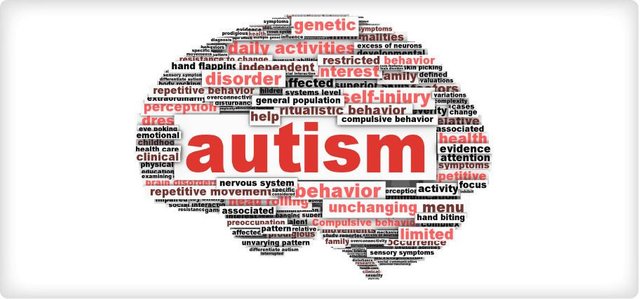UNDERSTANDING WHAT IS AUTISM
What Is Autism or Autism Spectrum Disorder, well if you just do a google search you come up with the following
noun
- a mental condition, present from early childhood, characterised by great difficulty in communicating and forming relationships with other people and in using language and abstract concepts.
Ok, if we drill deeper Autism Spectrum Disorder (ASD) and autism are both general terms for a group of complex disorders of brain development. These disorders are characterised, in varying degrees, by difficulties in social interaction, verbal and nonverbal communication and repetitive behaviours. Prior to May 2013 you had distinct subtypes, including autistic disorder, childhood disintegrative disorder, pervasive developmental disorder-not otherwise specified (PDD-NOS) and Asperger syndrome.
May 2013 all the above were merged into one under the same classification diagnosis of ASD - Autism Spectrum Disorder.
We have to look at the CDC in the USA for some information as the sad part is that the rest of the world is lagging on information
Cause and risk Factors
We do not know all of the causes of ASD. However, we have learned that there are likely many causes for multiple types of ASD. There may be many different factors that make a child more likely to have an ASD, including environmental, biologic and genetic factors.
Most scientists agree that genes are one of the risk factors that can make a person more likely to develop ASD
Children who have a sibling with ASD are at a higher risk of also having ASD.
ASD tends to occur more often in people who have certain genetic or chromosomal conditions, such as fragile X syndrome or tuberous sclerosis.
When taken during pregnancy, the prescription drugs valproic acid and thalidomide have been linked with a higher risk of ASD.
There is some evidence that the critical period for developing ASD occurs before, during, and immediately after birth.
Children born to older parents are at greater risk for having ASD.
Ok so there you have it from the horse's mouth, now let look at the Autism Timeline going back to 1908.
1908 - The word autism is used to describe a subset of schizophrenic patients who were especially withdrawn and self-absorbed.
1943: American child psychiatrist Leo Kanner, M.D., publishes a paper describing 11 children who were highly intelligent but displayed "a powerful desire for aloneness" and "an obsessive insistence on persistent sameness." He later names their condition "early infantile autism."
1944: A German scientist named Hans Asperger describes a "milder" form of autism now known as Asperger's Syndrome. The cases he reported were all boys who were highly intelligent but had trouble with social interactions and specific obsessive interests.
1967: Psychologist Bruno Bettelheim popularises the theory that "refrigerator mothers," as he termed them, caused autism by not loving their children enough.
1977: Research on twins finds that autism is largely caused by genetics and biological differences in brain development.
1980: "Infantile autism" is listed in the Diagnostic and Statistical Manual of Mental Disorders (DSM) for the first time; the condition is also officially separated from childhood schizophrenia.
1987: The DSM replaces "infantile autism" with a more expansive definition of "autism disorder," and includes a checklist of diagnostic criteria. UCLA psychologist Ivar Lovaas, Ph.D., publishes the first study showing intensive behaviour therapy can help children with autism--thus giving new hope to parents.
1988: The movie Rain Man is released. This was important for raising public awareness of the disorder.
1991: The federal government makes autism a special education category. Public schools begin identifying children on the spectrum and offering them special services.
1994: Asperger's Syndrome is added to the DSM, expanding the autism spectrum to include milder cases in which individuals tend to be more highly functioning.
1998: A study published in The Lancet suggests that the measles-mumps-rubella (MMR) vaccine causes autism. This finding was quickly debunked.
2000: Vaccine manufacturers remove thimerosal (a mercury-based preservative) from all routinely given childhood vaccines due to public fears about its role in autism--even though, again, the vaccine-autism link has been debunked.
2009: The U.S. Centers for Disease Control and Prevention (CDC) estimates that 1 in 110 children have autism spectrum disorders, up from 1 in 150 in 2007, though the CDC notes that the increase stems at least in part from improved screening and diagnostic techniques.That same number is now at 1 in 68 2013
2013: The DSM-5 folds all subcategories of the condition into one umbrella diagnosis of autism spectrum disorder (ASD). Asperger's Syndrome is no longer considered a separate condition. ASD is defined by two categories: 1) Impaired social communication and/or interaction. 2) Restricted and/or repetitive behaviours.
That will give you a basic understanding of what Autism is and it's progression over 110 years.
Love Light............................. Supa Ninja Warrior Lego Building Dad![Autism_Awareness-_What_is_Autism_1024x1024.jpg]

Hi! I am a robot. I just upvoted you! I found similar content that readers might be interested in:
http://www.parents.com/health/autism/history-of-autism/